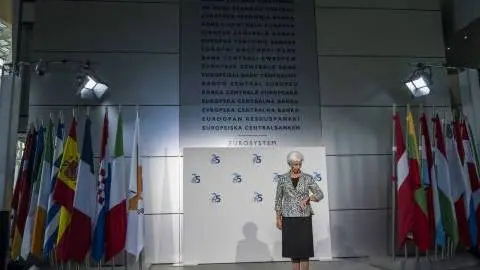FX: Tokyo struggles to turn the tide
FX volatility is coming lower as the Fed holds out hope of rate cuts and Japanese authorities intervene to support the yen
After a spike last month, FX volatility is drifting lower again. Two factors are driving this move: the less hawkish outlook on Federal Reserve policy and Japanese authorities entering FX markets to stabilise USD/JPY.
On the former, last month’s theme of ‘divergence’ did not last long. Jerome Powell’s dovish FOMC press conference was enough to thwart those positioning for unchanged Fed rates this year. We think we may well have seen the dollar’s pre-election peak and the dollar will again be sensitive to any decline in US activity and particularly US price data. At the same time, better-than-expected eurozone activity data and some calming in Middle East tensions mean that EUR/USD is seen as less of a one-way bet on the downside.
We have several measures pointing to EUR/USD medium-term fair value around the 1.08 area and we doubt EUR/USD will stray too far from this level over the next month.
FX stability has also been found from Japanese authorities likely supplying $50bn of dollars in FX intervention. Again, Tokyo will be trying to make USD/JPY less of a one-way bet and will be buying some time before – Tokyo hopes – softer Fed policy drags the dollar broadly lower through the second half of the year. For the time being, however, we would not be surprised to see more FX intervention in the 155-160 range this month.
Elsewhere in the G10 space, we think sterling is on the verge of independent weakness. The jury is out on whether sterling, with its high rates, should be traded more like a Fed/dollar story than an ECB/euro story. At some point over the next couple of months, we think the Bank of England will make it clear that it does have room to cut rates and sterling will fall. We can see EUR/GBP climbing to the 0.87 area later this quarter.
In the emerging market space, we are seeing pockets of appetite for high-yielding currencies such as the Mexican peso and other commodity-backed currencies in Latam and Africa. A little more stability in the G10 FX space should help these trends and also encourage the renewal of monetary easing cycles in emerging markets.
This publication has been prepared by ING solely for information purposes irrespective of a particular user's means, financial situation or investment objectives. The information does not constitute investment recommendation, and nor is it investment, legal or tax advice or an offer or solicitation to purchase or sell any financial instrument. Read more
Download
Download article
9 May 2024
ING Monthly: I wanna dance with somebody This bundle contains 14 Articles